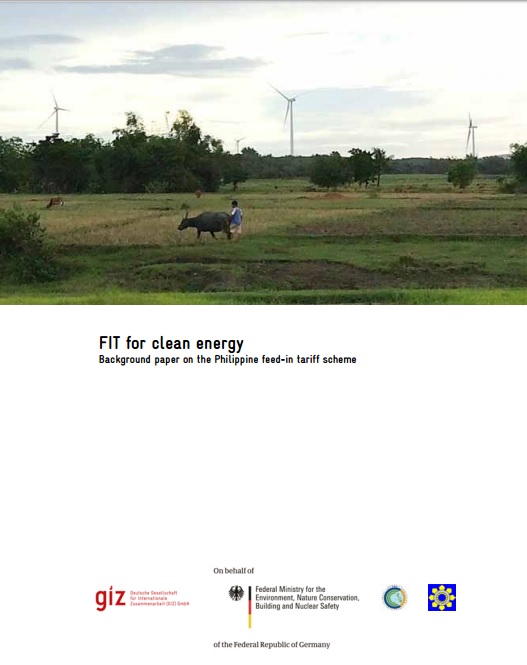FIT for Clean Energy

The Philippines, blessed with manifold renewable energy sources, find best preconditions to make the country’s power system fit for the future. Increasing fuel prices, high energy import dependence, ever increasing carbon emissions and unconsidered external costs of fossil fuels make renewable energies the superior alternative. However, in order to fully exploit the potential of renewable energy, a well-designed support mechanism is inevitable.
The Philippine government is willing to use this window of opportunity and introduced the Feed in Tariff (FIT). The costs of the FIT will be passed to all on-grid consumers in the form of a FIT allowance starting with the February 2015 collection. Even though this increases now the electricity bills of consumers slightly, the long-term benefits of renewable energy will pay this investment off.
In implementing the Feed-in Tariff, the Philippine government did a very important step towards a more reliable and sustainable energy supply while reducing energy dependence. However, many stakeholders are not yet fully aware of the benefits and opportunities of renewable energy development. Furthermore, the FIT-system, the collection of the FIT Allowance and the disbursement of the FIT revenue is quite complex and not easy to understand.
Against this background, Department of Energy Philippines and Deutsche Gesellschaft für Internationale Zusammenarbeit (GIZ) GmbH through the Support to the Climate Change Commission in the Implementation of the National Framework Strategy on Climate Change and the National Climate Change Action Plan Project (SupportCCC), funded by the German Federal Ministry for the Environment, Nature Conservation, Building and Nuclear Safety (BMUB) under its International Climate Initiative, developed in order to provide a comprehensive overview about the Philippine FIT scheme and summarize important background information on renewable energy development. Questions that are addressed in the paper include: Why should we support renewables? How does the Philippine FIT-system work? Are renewable energies already competitive? How does the introduction of the FIT affect the electricity prices of consumers?